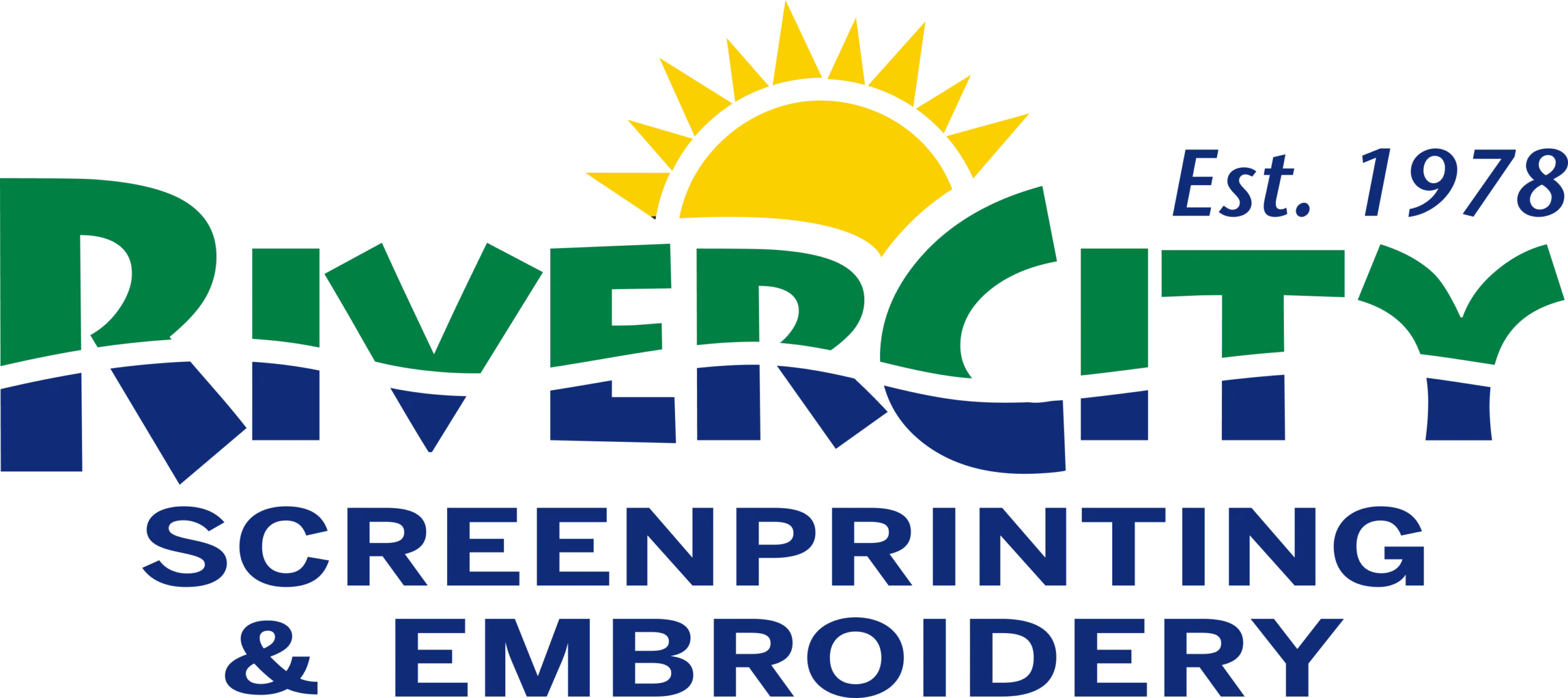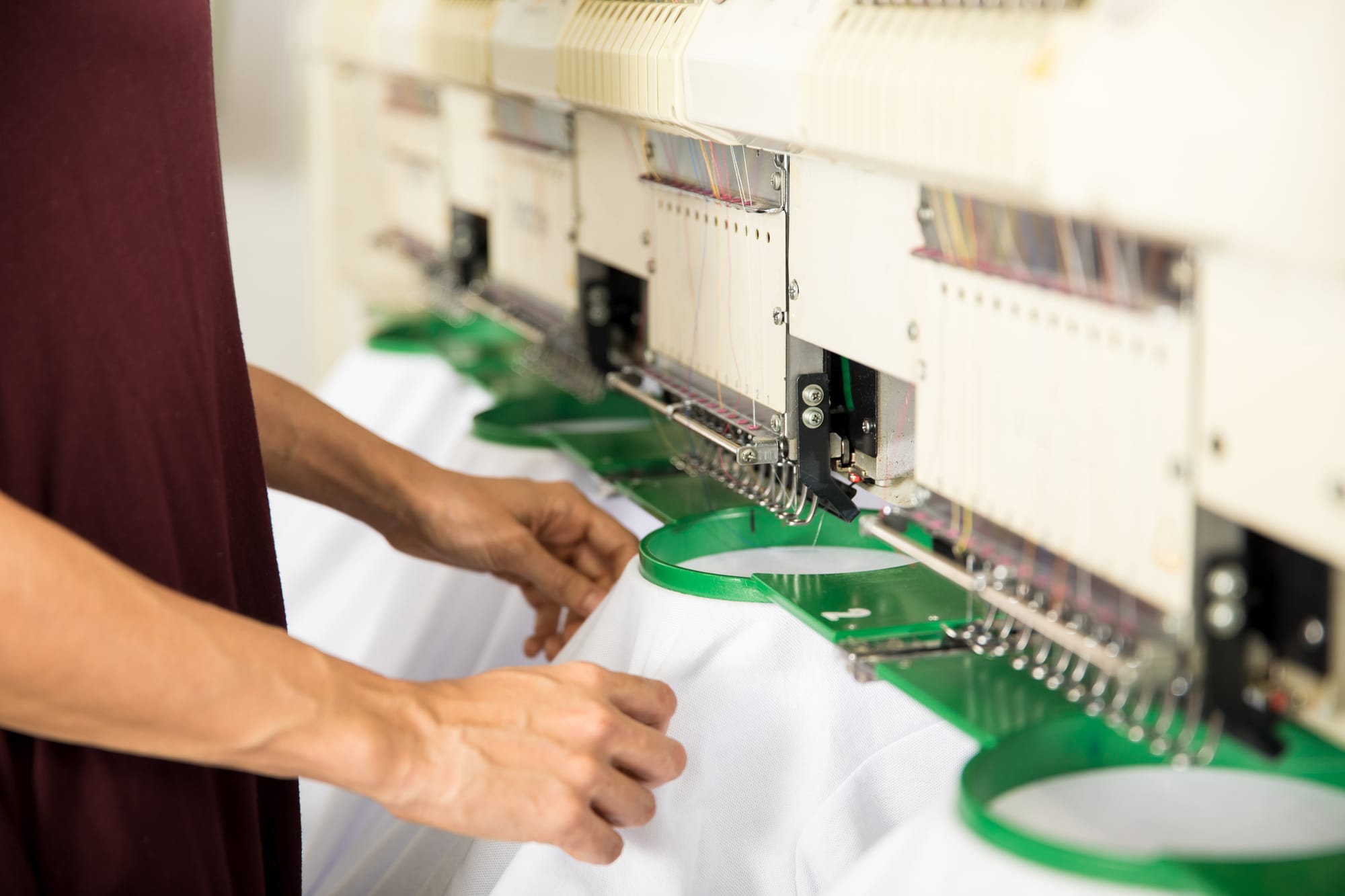If you are looking for a way to customize your apparel and promotional products, you might be wondering whether to choose screen printing or embroidery. Both methods have their own advantages and disadvantages, depending on the type of project, budget, and desired outcome. We’ll compare and contrast San Marcos screen printing and embroidery, and help you decide which one is best suited for your needs.
What’s Screen Printing?
Screen printing is a technique that involves pressing ink through a stenciled mesh screen onto a fabric or other material. It can create vibrant, durable, and versatile designs that can be applied to various types of garments and products. When it comes to custom apparel in San Marcos TX, screen printing offers many advantages, such as:
- Colorful and crisp designs. Screen printing can produce bright, vivid, and crisp colors that stand out and attract attention. It can handle complex and detailed designs that are hard to achieve with embroidery. You can choose from a wide range of colors, fonts, and graphics to create your own unique and eye-catching designs.
- Versatile and flexible printing. Screen printing can print on various types of fabrics and materials, such as cotton, polyester, nylon, leather, metal, wood, and plastic. It can also print on different parts of the garment or product, such as sleeves, pockets, collars, and zippers. It can print on large areas and cover the entire surface of the product, giving you more options and possibilities for your project.
- Cost-effective and efficient printing. Screen printing is ideal for large orders, as it is cost-effective and efficient. The more you print, the lower the cost per unit. Screen printing also has a fast turnaround time, as it can print hundreds or thousands of products in a short period of time.
However, screen printing also has some drawbacks, such as:
- Fading and cracking over time. Screen printing can fade, crack, or peel over time, especially if exposed to harsh weather or washing conditions. The ink can lose its color and quality, and the design can become less visible and attractive. To prevent this, you need to take good care of your screen printed products, such as washing them inside out, using cold water, and avoiding bleach and dryers.
- Heavy and stiff feeling on the fabric. Screen printing can feel heavy or stiff on the fabric, especially if there are multiple layers of ink or large areas of coverage. The ink can add weight and thickness to the fabric, making it less comfortable and breathable. This can affect the fit and feel of the garment, and the satisfaction of the wearer.
- Limited color options and minimum order quantities. Screen printing can have limited color options, as each color requires a separate screen and setup fee. This can increase the cost and complexity of the printing process, and limit your creativity and flexibility. Screen printing can also have minimum order quantities, as it is not economical to print small batches. This can be a problem if you only need a few products or want to test the market.
What’s Embroidery?
Embroidery is a technique that involves stitching thread or yarn onto a fabric or other material. It can create elegant, sophisticated, and professional designs that can add value and quality to your products. Embroidery is one of the most traditional and respected methods of customizing apparel and promotional products, as it offers many benefits:
- High-end and classy look. Embroidery can create a high-end, luxurious, and classy look that enhances the perceived value and quality of your products. It can make your products stand out and impress your customers, clients, or partners. Embroidery can also create a sense of pride and loyalty among your employees, members, or supporters, as it shows your commitment and dedication to your brand or cause.
- Long-lasting and durable designs. Embroidery can last longer and withstand wear and tear better than screen printing, as it is more resistant to fading, shrinking, or tearing. The thread or yarn can retain its color and quality, and the design can remain visible and attractive. Embroidery can also endure harsh weather and washing conditions, as it can withstand high temperatures and water pressure.
- Soft and smooth feeling on the fabric. Embroidery can feel soft and smooth on the fabric, especially if there are few stitches or small areas of coverage. The thread or yarn can blend well with the fabric, making it more comfortable and breathable. This can improve the fit and feel of the garment, and the satisfaction of the wearer.
However, embroidery also has some drawbacks:
- Expensive and time-consuming process. Embroidery can be more expensive and time-consuming than screen printing, as it requires more skill, labor, and equipment. The cost of embroidery depends on the number of stitches, colors, and locations of the design, which can vary widely depending on the complexity and size of the design. Embroidery also has a slower turnaround time, as it takes longer to stitch each product.
- Difficulty reproducing fine details and gradients. Embroidery can have difficulty reproducing fine details, gradients, or shades, as it is limited by the size and shape of the stitches. It can be hard to create smooth and realistic transitions between colors, or to capture the nuances and subtleties of the design. Embroidery can also have a pixelated or jagged appearance, especially if the design is enlarged or reduced.
- Limited fabric and location options. Embroidery can only be applied to certain types of fabrics and materials, such as cotton, wool, silk, denim, and canvas. It can also only be applied to certain parts of the garment or product, such as chest, back, or hem. Embroidery can be difficult or impossible to apply to thin, stretchy, or textured fabrics, or to curved, uneven, or hard-to-reach areas.
How to Choose Between Screen Printing and Embroidery
There is no definitive answer to which method is better, as it depends on various factors, such as:
- The type of product you want to customize. Different products have different characteristics and requirements, such as the size, shape, material, and function of the product. For example, if you want to customize a t-shirt, you might prefer screen printing, as it can create colorful and intricate designs that can cover the entire shirt. However, if you want to customize a hat, you might prefer embroidery, as it can create elegant and professional designs that can fit the small and curved area of the hat.
- The purpose of your project. Different projects have different goals and expectations, such as the message, audience, and occasion of the project. For example, if you want to create a marketing campaign, you might prefer screen printing, as it can create eye-catching and memorable designs that can attract and engage your potential customers. However, if you want to create a branding strategy, you might prefer embroidery, as it can create high-end and classy designs that can enhance your brand image and reputation.
- The design of your logo, image, or text. Different designs have different elements and features, such as the simplicity, complexity, colorfulness, or monochromaticity of the design. For example, if you have a simple and monochrome logo, you might prefer embroidery, as it can create a refined and polished look that can complement your logo. However, if you have a complex and colorful image, you might prefer screen printing, as it can create a vibrant and crisp look that can showcase your image.
- The quantity of your order. Different orders have different sizes and volumes, such as the number of products you need or want to print. For example, if you have a large order, you might prefer screen printing, as it is more cost-effective and efficient for large batches. However, if you have a small order, you might prefer embroidery, as it is more durable and longer-lasting for small batches.
- The budget of your project. Different projects have different costs and expenses, such as the price of the products, the printing method, and the shipping and handling fees. For example, if you have a low budget, you might prefer screen printing, as it is more affordable and faster for large orders. However, if you have a high budget, you might prefer embroidery, as it can add value and quality to your products.
To help you make an informed decision, here are some general guidelines:
- Choose screen printing if you want to create eye-catching, colorful, and intricate designs that can be printed on various types of products and fabrics. Screen printing is also more affordable and faster for large orders.
- Choose embroidery if you want to create elegant, sophisticated, and professional designs that can add value and quality to your products. Embroidery is also more durable and longer lasting for small orders.
Make Your Project Stand Out with Us
Screen printing and embroidery in San Marcos are both great options for customizing apparel and promotional products. They have their own pros and cons, depending on the type of project, budget, and desired outcome.
The best way to choose between them is to consider the factors mentioned above and consult with a professional screen printing and embroidery provider. We have the experience, expertise, and equipment to help you create the perfect products for your needs. Contact us today for a free quote and consultation!

